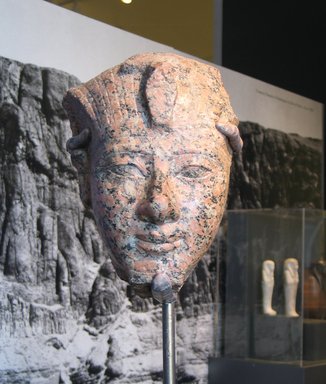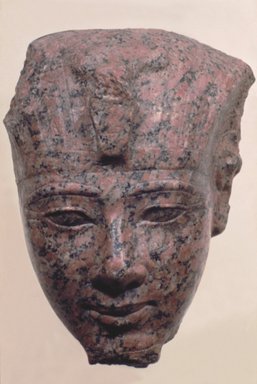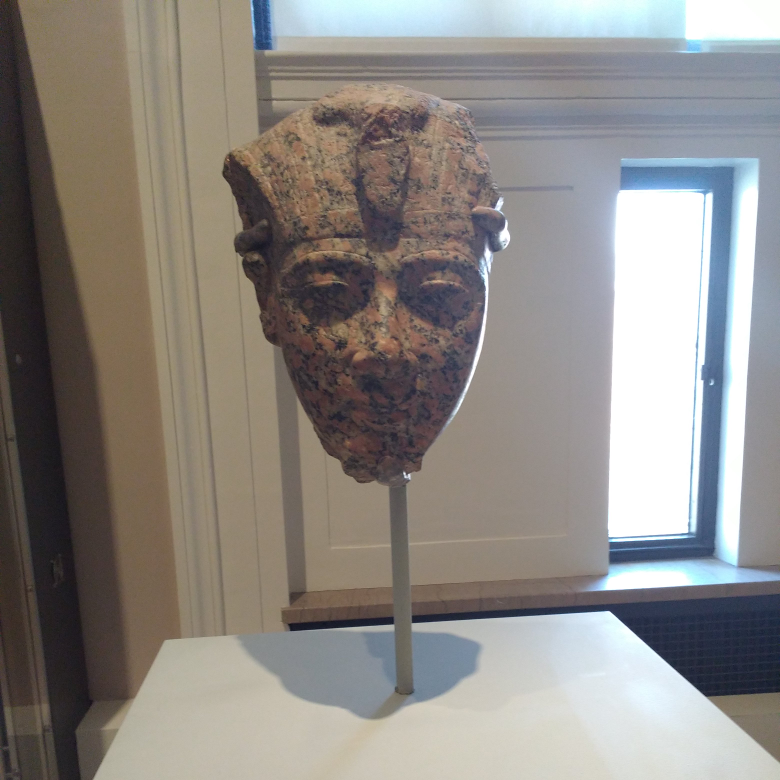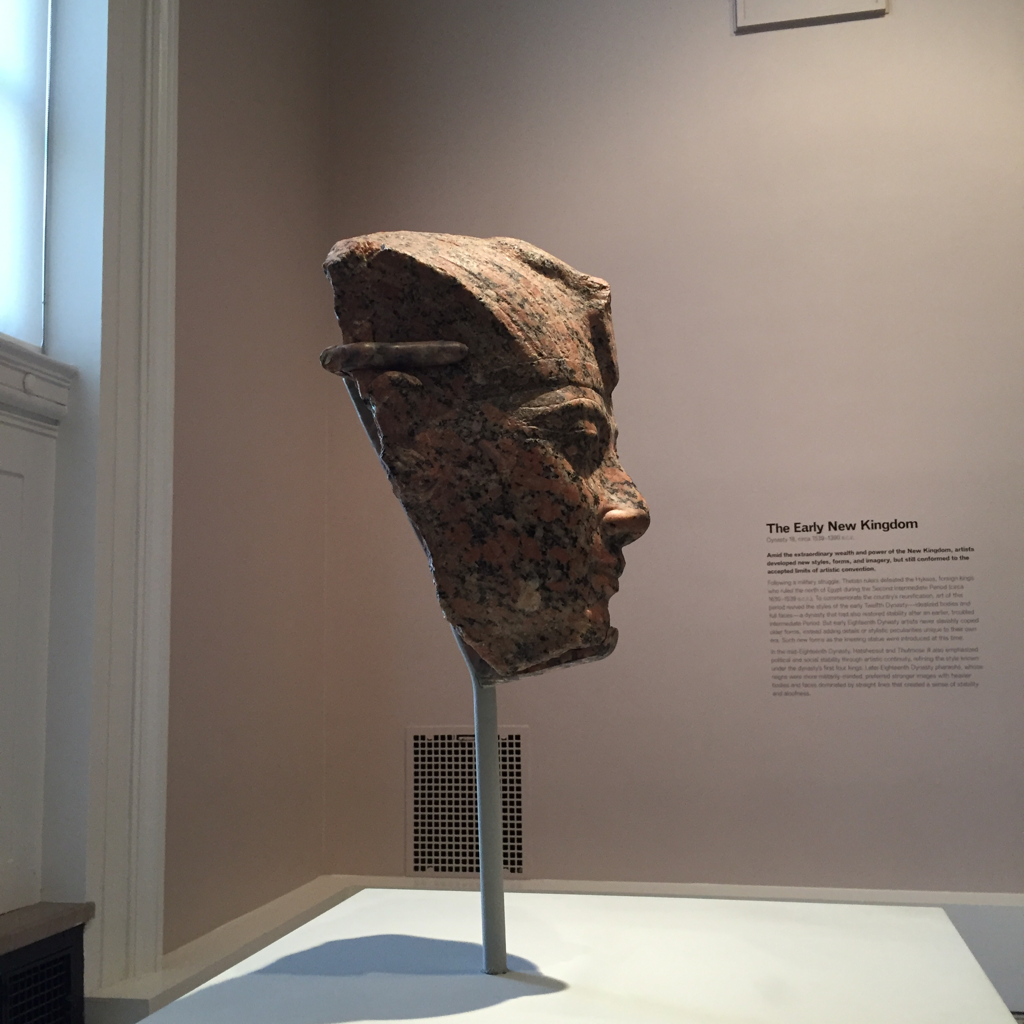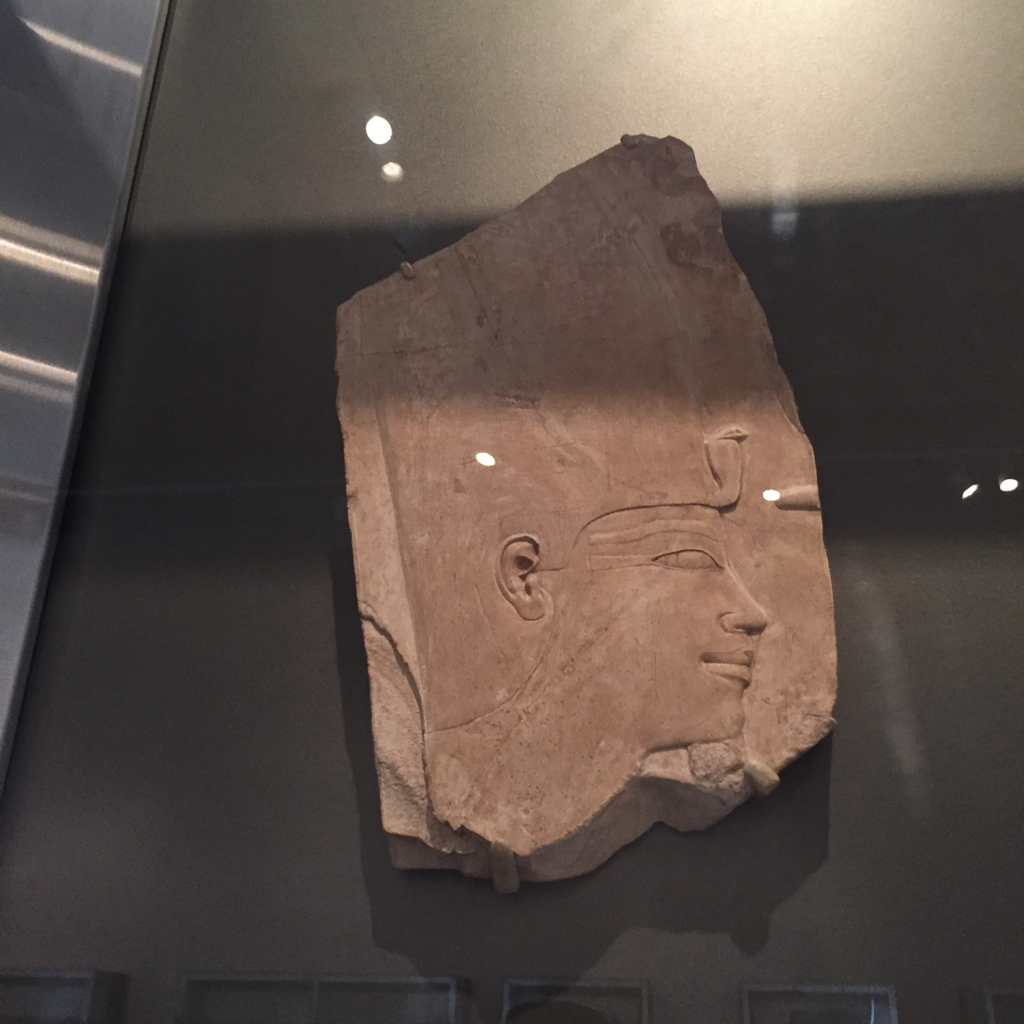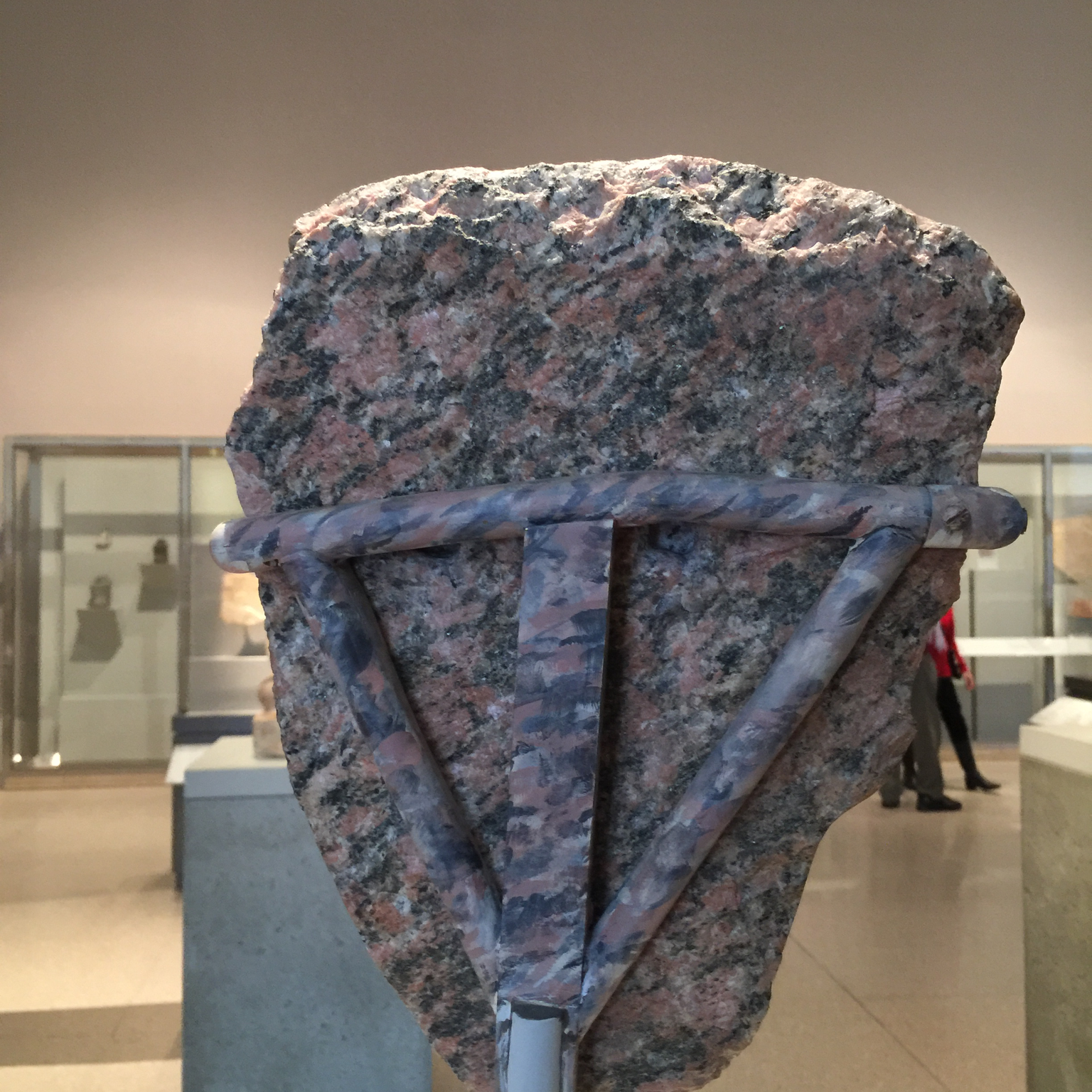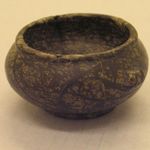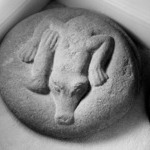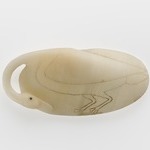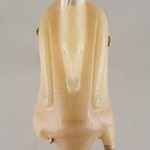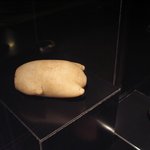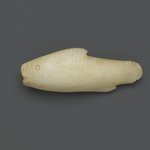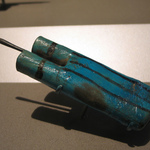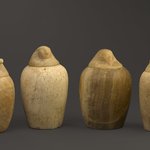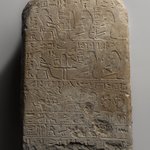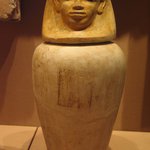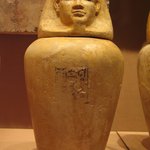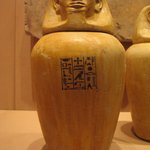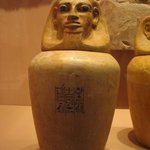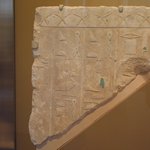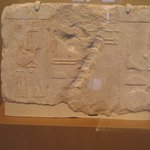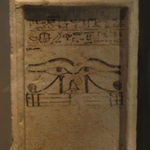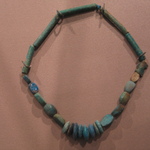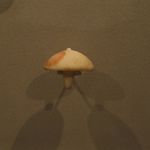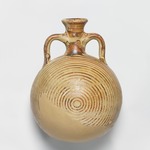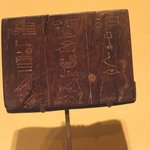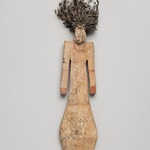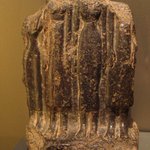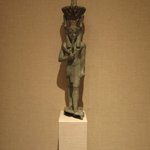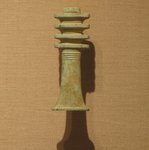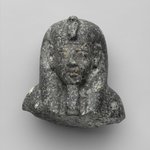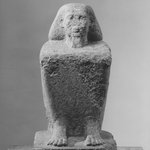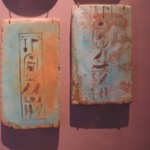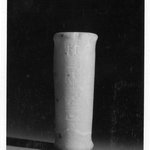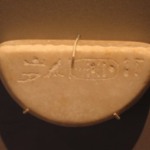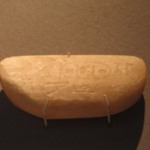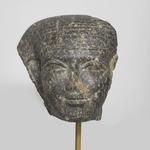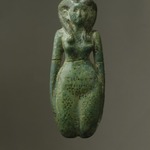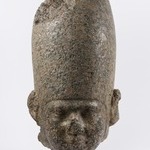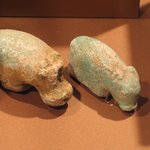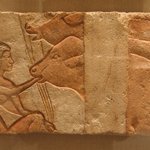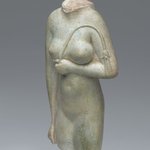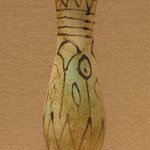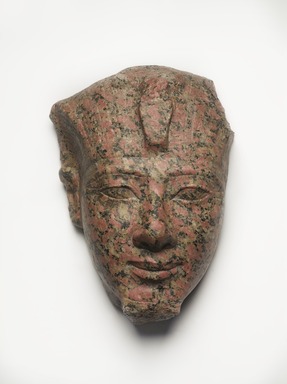

Amunhotep II, ca. 1426–1400 B.C.E. Granite, 12 1/2 × 9 1/2 × 6 in., 28 lb. (31.8 × 24.1 × 15.2 cm, 12.7kg). Brooklyn Museum, Charles Edwin Wilbour Fund, 56.7. Creative Commons-BY (Photo: , 56.7_PS9.jpg)
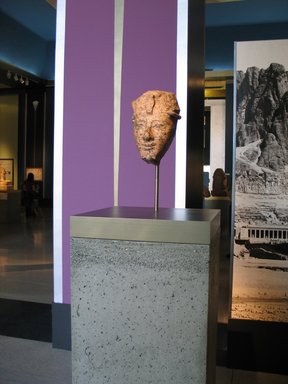
Amunhotep II, ca. 1426–1400 B.C.E. Granite, 12 1/2 × 9 1/2 × 6 in., 28 lb. (31.8 × 24.1 × 15.2 cm, 12.7kg). Brooklyn Museum, Charles Edwin Wilbour Fund, 56.7. Creative Commons-BY (Photo: Brooklyn Museum, CUR.56.7_view2_erg456.jpg)
Amunhotep II
Egyptian, Classical, Ancient Near Eastern Art
On View: Old Kingdom to 18th Dynasty, Egyptian Galleries, 3rd Floor
The faces on most statues of Amunhotep II differ slightly from those of his two immediate predecessors. Compared with the sculpture of Thutmose III or Hatshepsut exhibited nearby, for example, this statue’s face is a little longer, the eyes somewhat narrower, the brows a bit straighter, the nose slightly thicker, and the mouth less curved. Each change is minute, but together they create a distinctive, recognizable image of Amunhotep II. This face is not a portrait, but an official image conceived by the chief royal sculptors to communicate the ideal physical appearance of Amunhotep II. The Egyptians believed that reality was momentary and thus, within the context of eternity, meaningless. Only an ideal representation would endure forever.
MEDIUM
Granite
DATES
ca. 1426–1400 B.C.E.
DYNASTY
Dynasty 18
PERIOD
New Kingdom
DIMENSIONS
12 1/2 × 9 1/2 × 6 in., 28 lb. (31.8 × 24.1 × 15.2 cm, 12.7kg) (show scale)



COLLECTIONS
Egyptian, Classical, Ancient Near Eastern Art
ACCESSION NUMBER
56.7
CREDIT LINE
Charles Edwin Wilbour Fund
PROVENANCE
Archaeological provenance not yet documented; before 1943, acquired by Moïse Lévy de Benzion of Cairo, Egypt and Paris, France; March 20, 1947, sold in Cairo, Villa de Benzion sale; between 1947 and 1956, provenance not yet documented; before 1956, acquired by Frank J. Tano of New York, NY; January 1956, purchased by the Brooklyn Museum.
Provenance FAQ
CATALOGUE DESCRIPTION
Red granite head of a king, probably Amenhotep II, from an over life-sized statue. Nemes headdress with uraeus. Conventionalized face with eyebrows in high relief; ceremonial beard without strap. Top of headdress and uraus left roughly finished. Only front half of head is preserved.
Condition: Face intact. Rear half of head lost. Chin chipped, only beginning of beard preserved.
EXHIBITIONS
MUSEUM LOCATION
This item is on view in Old Kingdom to 18th Dynasty, Egyptian Galleries, 3rd Floor
CAPTION
Amunhotep II, ca. 1426–1400 B.C.E. Granite, 12 1/2 × 9 1/2 × 6 in., 28 lb. (31.8 × 24.1 × 15.2 cm, 12.7kg). Brooklyn Museum, Charles Edwin Wilbour Fund, 56.7. Creative Commons-BY (Photo: , 56.7_PS9.jpg)
IMAGE
overall, 56.7_PS9.jpg., 2018
"CUR" at the beginning of an image file name means that the image was created by a curatorial staff member. These study images may be digital point-and-shoot photographs, when we don\'t yet have high-quality studio photography, or they may be scans of older negatives, slides, or photographic prints, providing historical documentation of the object.
RIGHTS STATEMENT
Creative Commons-BY
You may download and use Brooklyn Museum images of this three-dimensional work in accordance with a Creative Commons license. Fair use, as understood under the United States Copyright Act, may also apply.
Please include caption information from this page and credit the Brooklyn Museum. If you need a high resolution file, please fill out our online application form (charges apply).
For further information about copyright, we recommend resources at the United States Library of Congress, Cornell University, Copyright and Cultural Institutions: Guidelines for U.S. Libraries, Archives, and Museums, and Copyright Watch.
For more information about the Museum's rights project, including how rights types are assigned, please see our blog posts on copyright.
If you have any information regarding this work and rights to it, please contact copyright@brooklynmuseum.org.
RECORD COMPLETENESS
Not every record you will find here is complete. More information is available for some works than for others, and some entries have been updated more recently. Records are frequently reviewed and revised, and we welcome any additional information you might have.
